
Guilds of London #oasisoffun





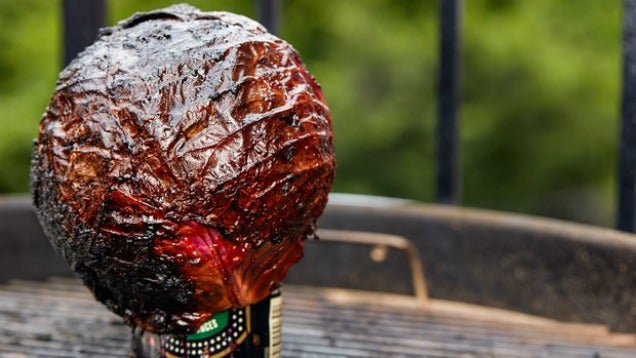
Beer can chicken is a grilling season staple, but now there’s a new beer-steamed entree in town, and it is the hearty cabbage. Sure, it’s a great option for your veggie friends, but it’s also just a really tasty way to cook cabbage.
Cabbage has no natural cavity (obviously), so you’ll have to carve one out yourself. Just cut out a hole large enough for a can of beer to fit halfway inside, scooping out the core with a spoon. Brush some oil on the cabbage, and season the whole thing with salt and pepper. Next, grab a can of beer and drink half of it. Shove the can inside your hollowed-out cruciferous, coat the cabbage with BBQ sauce, and set it upright on the grill. Cook for about 45 minutes, brushing with more tasty sauce every 15 or so, until the out leaves are browned.
Remove cabbage from grill and relieve it of its beer can throne. Slice into strips, and place on kaiser rolls with fresh carrots and grilled onion for super tasty sandwiches that will be enjoyed by pretty much anyone, vegetarian or not.
Meet Beer-Can Cabbage, the Ultimate Vegetarian BBQ Main Course | Epicurious
Photo by Chelsea Kyle, prop styling by Alex Brannian, food styling by Dawn Perry.
from Lifehacker
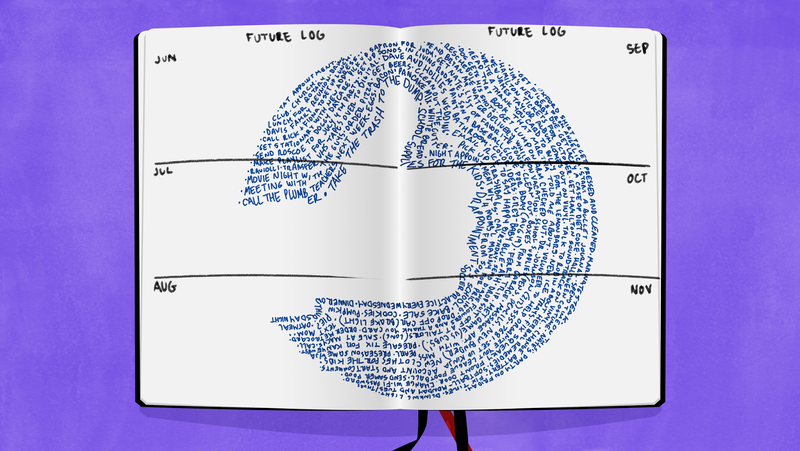
Look up #bulletjournal on the social media platform of your choice, and you can feast your eyes on a sea of neatly inked notebook pages designed to track everything from daily to-do lists to inspirational quotes. Go ahead, roll your eyes. But bullet journals are an amazing productivity tool, if you can learn to adapt them to your life. No colored pens required.

A bullet journal is just a notebook that accommodates a huge variety of planning schemes. You can create calendars and to-do lists, and you can also use it as a diary, a brainstorming notepad, and more. If you’ve ever bought a planner, but didn’t love the design of the pre-printed pages, the bullet journal is your opportunity to make a planner that fits the way your brain works.
The video that launched the bullet journal craze describes a set of conventions that many, but not all, bullet journalers stick to. You create an index to help you find things, a few pages that help you plan the year, and a two-page spread for important dates and tasks for each month. (Many bullet journalers also do a spread for each week.) Then, you write down each day’s plans and events in the form of bulleted lists—hence the name.
http://lifehacker.com/the-bullet-jou…
As described in that video, most of a bullet journal is just a calendar. The beauty of this hand-written calendar, though, is that you create it as you go, so you always have space for everything else you want to write. Future events go on a long term calendar that comes earlier in the book than today’s page, so every page from today to the end of the book is blank.
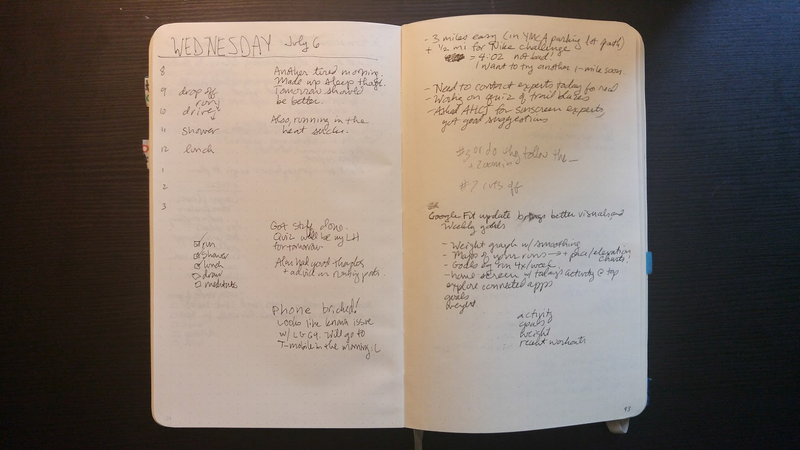
Here’s how that flexibility pays off. I wrote down my daily list of tasks this morning, and as I was working today, I flipped to the next blank page to brainstorm some ideas for this post. Later in the day, I used the blank page after that to start a checklist for a multi-part project that’s due later this month. Back when I used pre-printed planners, like the PlannerPad, I would have had to grab a second notebook, or a spare sheet of paper, to keep track of these things. The bullet journal approach keeps all my thoughts in one place.
The index ties everything together, so you can easily find those notes later. Just leave the first few pages of the notebook blank, and add topics and page numbers for anything you might want to find again. Yes, this may mean hand-numbering the pages, but that’s not a hassle. It only takes a minute to page through the bottom right corner of the notebook and write the odd numbers.
Adaptability is another perk to the system: each day doesn’t have to be the same. I plot out my day hour-by-hour if I have a lot of events and appointments that day, but if I just have a few things to get done, I’ll go back to a short bullet list instead.
Bullet journalers have expanded this system in hundreds of ways. One popular add-on is a habit tracker, a grid where you can see how often this month you have meditated, or exercised, or flossed. You can also graph your progress toward saving money, make a list of books you want to read, or dedicate a page here and there to doodles.
For some people, making the journal beautiful is a hobby. These are the folks who post on Instagram that they’re relaxing with their journal and some colored pens for a little “me time” at the end of the day.
That’s not me. It doesn’t have to be you, either. I use a single, black pen. I don’t take more than about two minutes to set up my page for the day. I sometimes skip a day and don’t feel any guilt about it. And when I asked around, tons of bullet journalers told me that their books are “ugly” or “messy”. Sometimes that means that they’re trying to fill them with pretty art, and judging themselves harshly if they don’t like how it turns out. But many, like me, just have pages of scribbles. What matters is that the scribbles are where we need them, when we need them.
I don’t use the yearly calendar from the official instructions. I also forgot to make monthly pages for July and August. But thanks to my daily pages, and the lists and brain dumps I’ve scattered throughout the book, I know exactly what I need to work on today, what’s lingering from last week, and what article ideas I came up with over the last few months that I haven’t written yet.
Change the system enough, and some doubters say you aren’t really bullet journaling. If you collect thoughts and memories, maybe it’s really a journal or a commonplace book. If you don’t use the original video’s bullet system, maybe it’s just a DIY planner without a catchy name.
In the spirit of adaptability, I’m going to decree that it doesn’t matter what you call it—you should use the word that helps you the most. If you think of your book as a bullet journal, you’ll look for ideas among bullet journal blogs and communities. Right now, those are a happening place to find inspiration that works for me, so it’s the word I use. On the other hand, if you google “DIY planner”, the ideas that come up are a little bit different: more binders and printables, for example. Use any terms that help you find (and, optionally, share) the ideas you like.
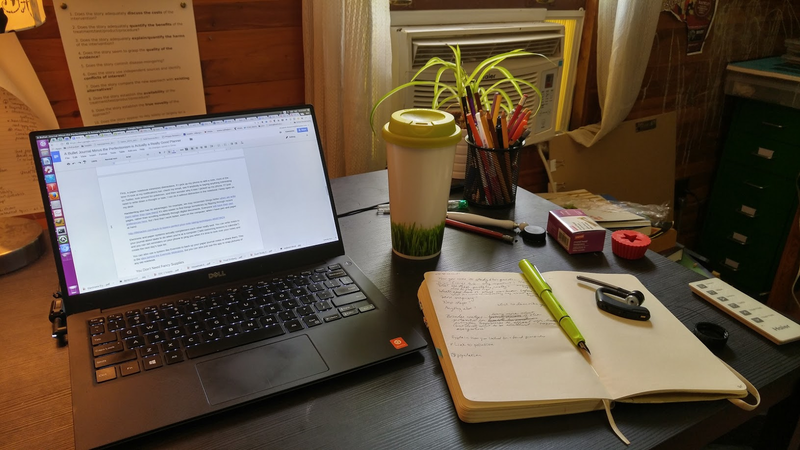
If you like keeping track of events and tasks in your phone, there’s no need to stop. In that case, you may wonder what the point of a physical notebook is. In fact, there are tons of reasons why I still swear by a paper journal.
http://lifehacker.com/how-to-use-a-s…
First, a paper notebook minimizes distractions. If I pick up my phone to add a note, most of the time I’ll look at my notifications bar, check my email, see if anybody is saying anything interesting on Twitter, look around for pokémon, and then wonder why it was I picked up my phone. If I just need to write down a thought or task, I can do it without distraction in the notebook I keep open on my desk.
Handwriting also has its advantages: for example, we may remember things better when we write them rather than type them. It’s also easier to find things sometimes by flipping through recent pages, rather than scrolling endlessly through digital documents. Everyone will have their own preferences here, but I find that I work better, even on the computer, when I have pen and paper at hand.
http://lifehacker.com/back-to-basics…
Electronic and paper systems actually complement each other really well. You can write notes in your journal about tasks to do when you’re at a computer (“add swimming lessons to calendar”) and you can set reminders on your phone to ping you when it’s time to look over your notes and create the next day’s task list.
You can also use a system like Evernote to back up your paper journal notes or share them. This is the idea behind the Evernote Moleskine, but you can also just use the app to snap pictures of any old notebook.
Bullet journalers have favorite supplies, which do come in handy but are absolutely not necessary. Here’s what they are, and some alternatives that don’t require you to blow your paycheck at the craft store:
A bullet journal doesn’t have to be an art project to be a functional system. That said, it’s totally okay if pretty things motivate you. You’ll want to find your sweet spot, where you don’t feel guilted to decorate, but you still find your planner a handy and happy place to collect your thoughts. And if that means that it’s ugly, enjoy: it works, and it’s all yours.
Illustration by Sam Woolley.
from Lifehacker
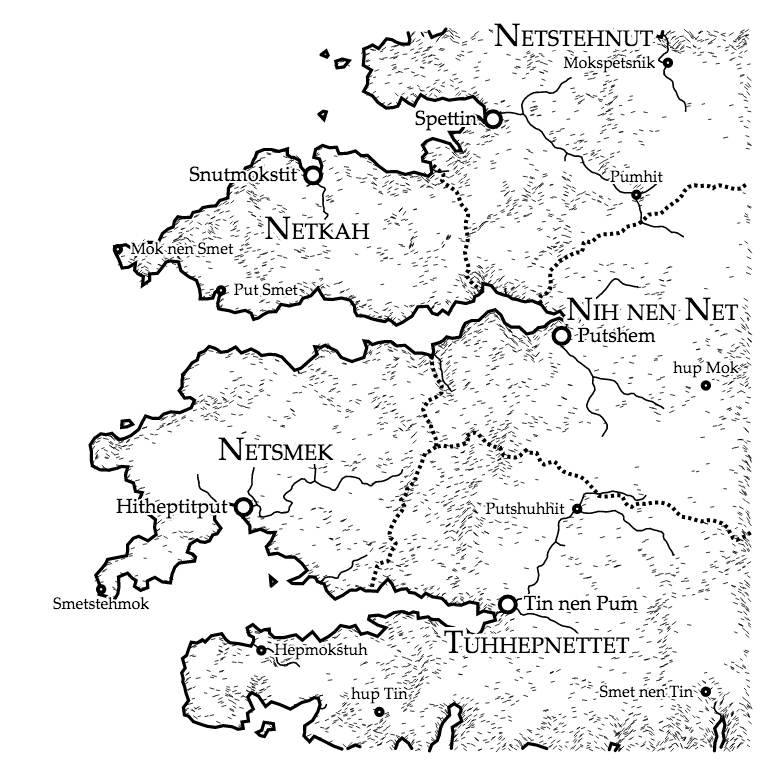
Martin O’Leary not only made a cool fantasy map generator, he’s giving away the source code and has described the process at a high enough level for an idiot like me to partly understand how it works.
I wanted to make maps that look like something you’d find at the back of one of the cheap paperback fantasy novels of my youth. I always had a fascination with these imagined worlds, which were often much more interesting than whatever luke-warm sub-Tolkien tale they were attached to.
At the same time, I wanted to play with terrain generation with a physical basis. There are loads of articles on the internet which describe terrain generation, and they almost all use some variation on a fractal noise approach, either directly (by adding layers of noise functions), or indirectly (e.g. through midpoint displacement). These methods produce lots of fine detail, but the large-scale structure always looks a bit off. Features are attached in random ways, with no thought to the processes which form landscapes. I wanted to try something a little bit different.
It’s an odd feeling to look at these instantly-generated, detailed maps and realize that they represent nothing. I feel like I’m being wasteful pressing the "Generate high resolution map." The Uncharted Atlas is a twitterbot that posts a new map every hour.
from Boing Boing
submitted by Lewis Walsh

Half of this stuff fits inside the various cases and pouches. It all goes in a nondescript laptop backpack.
from Everyday Carry
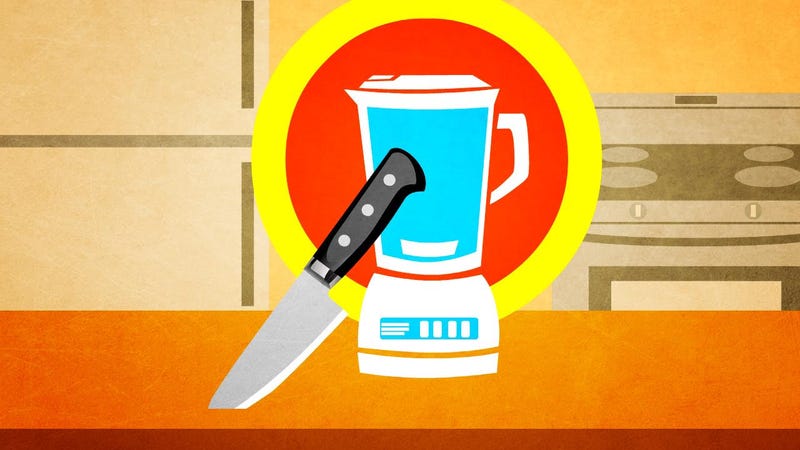
We’ve discussed kitchen tools everyone should have, and tools everyone on a budget should have, but if you’re willing to put a little money into your home cooking, here are some solid kitchen tools that may cost a little more than usual, but will pay you back in flavor, time saved, or just plain quality of life.
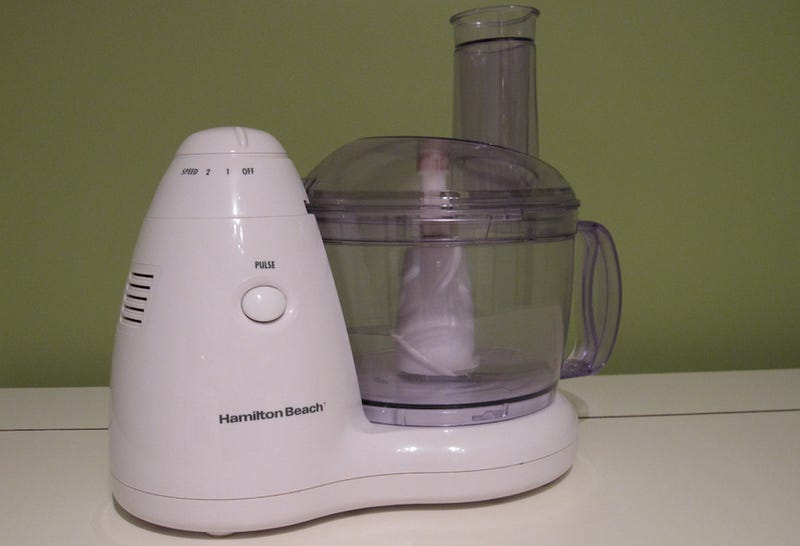
It’s really tough to understate how much good a food processor in your kitchen can do. Sure, you could always just grab a knife and get to chopping, slicing, and julienning, but a food processor can do so much more than cut up vegetables. A solid one can mix dough, make deliciously smooth pesto or hummus, and emulsify salad dressing in a snap. Want to get adventurous? Try making pizza dough, home-ground burger patties, or even perfect whipped cream.
http://skillet.lifehacker.com/kitchen-tool-s…
You can get some inspiration for what to do with your own food processor—or some good reasons to consider buying one—in our Kitchen Tool School feature on them. Trust me, I only have a small, space-saving model, and I use it for hummus, pesto, and deviled eggs all the time, and couldn’t imagine not owning one.
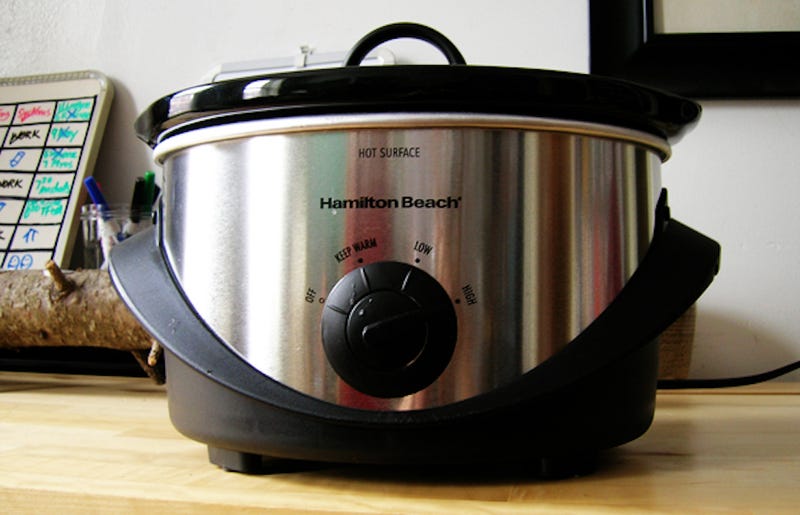
You don’t have to spend a lot of money to get a good slow cooker, but you don’t want to cheap out on them either. A solid midrange one that gets just hot enough and can maintain its heat over time will let you cook all sorts of amazing things, from whole chickens, delicious slow-cooked ribs, and even delicious dips, all with little to no effort at all. Want something sweet? That piece even has recipes for overnight oatmeal or cheesecake—all in a slow cooker.
http://lifehacker.com/delicious-dish…
Best of all, you can make virtually any recipe a slow-cooker recipe with some simple tweaking, so you can have your delicious gourmet meal without the time standing over the stove or heating up your home using your oven. Besides, there’s nothing like coming home to a delicious, hot meal waiting for you—you’ll save time cooking, and save the money you’d spend ordering out after a long day.
http://lifehacker.com/make-almost-an…
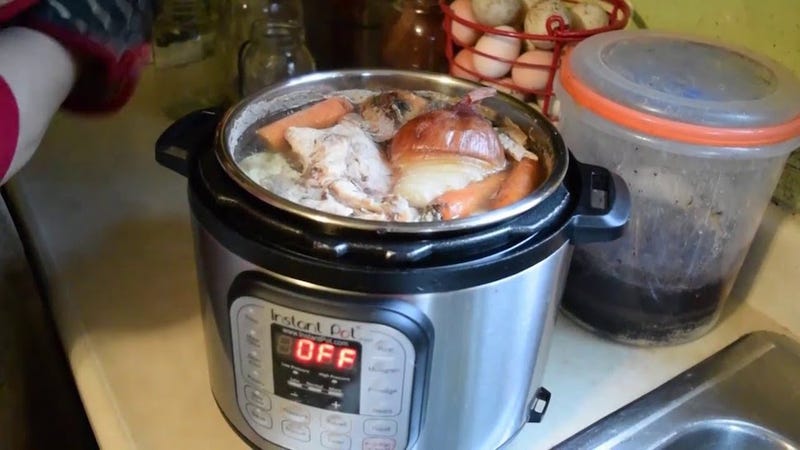
Pressure cookers are invaluable kitchen appliances, and they’ve come a long way from the old “careful it doesn’t explode” variety that our parents and grandparents had. They’re safer than ever, more functional than ever, and besides, who doesn’t love the idea of a super-simple fondue or cheese dip, a whole roast chicken, 30-minute chicken broth, or even delicious fresh bread, all without firing up the oven?
http://lifehacker.com/5954077/why-yo…
Best of all, pressure cookers don’t have to be terribly expensive, and some of them can even pull double duty as slow cookers and rice cookers, like the ever-handy Instant Pot.
http://lifehacker.com/how-i-conquere…
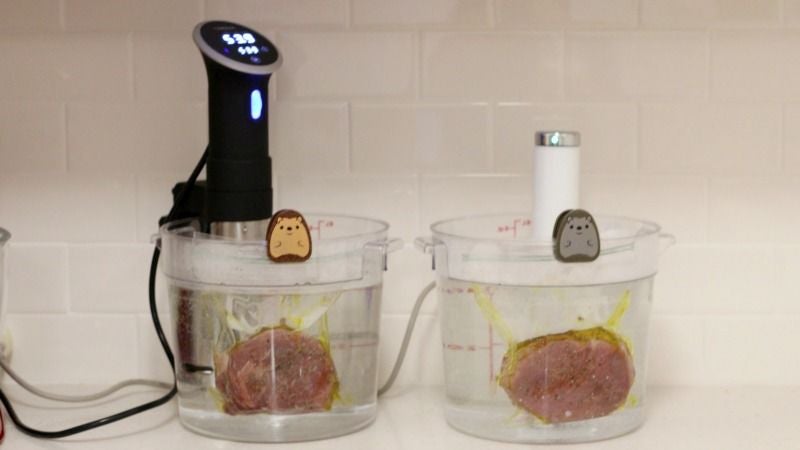
Immersion circulators, or sous vide machines, can definitely be pricey. Some of our favorites are around $200, and while you don’t need a sous vide machine, and our Sous Vide 101 feature was all about me using a cooler to cook steaks, if you do decide to invest in one, you can get some huge benefits.
http://lifehacker.com/5868685/sous-v…
Once you have one, the tastiest burgers you’ve ever had are just a few minutes away, as are deliciously perfect steaks, the eggs—soft or hard boiled—of your dreams, and even your very own marijuana edibles, made at home, where it’s legal of course. Lay down the entrance fee now, and you’ll be paid back a thousandfold in deliciousness, effortless cooking, and of course, some really ingenious recipes.
http://skillet.lifehacker.com/sous-vide-show…
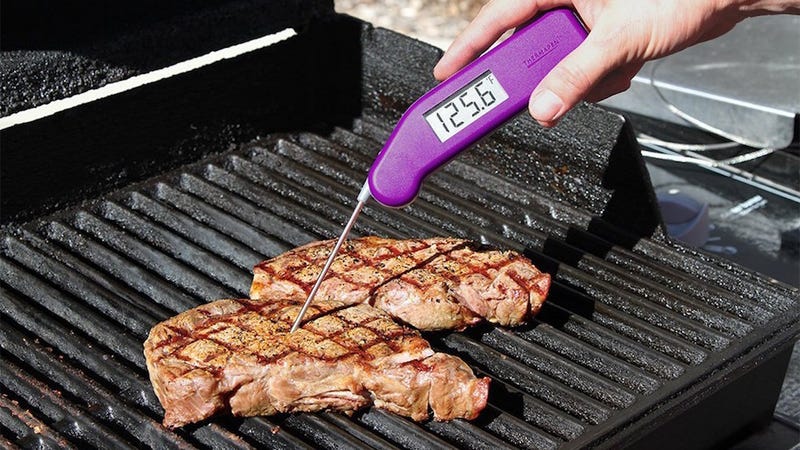
A cooking thermometer is a must in any kitchen, and will mean the difference between haphazardly poking meat thinking your fingers or your face can tell if they’re done (neither of which are universally accurate) and actually knowing that it’s the perfect temperature and texture. Heck, a good thermometer will even help you make perfect cocktails.
http://lifehacker.com/the-poke-test-…
I’m a big fan of Thermoworks’ Thermapen (as is the always-amazing Alton Brown,) as I’ve mentioned before, but if you don’t want to spend the money, there are other models that are equally sensitive for less money, like the Thermoworks ThermoPop.
http://lifehacker.com/the-thermapen-…
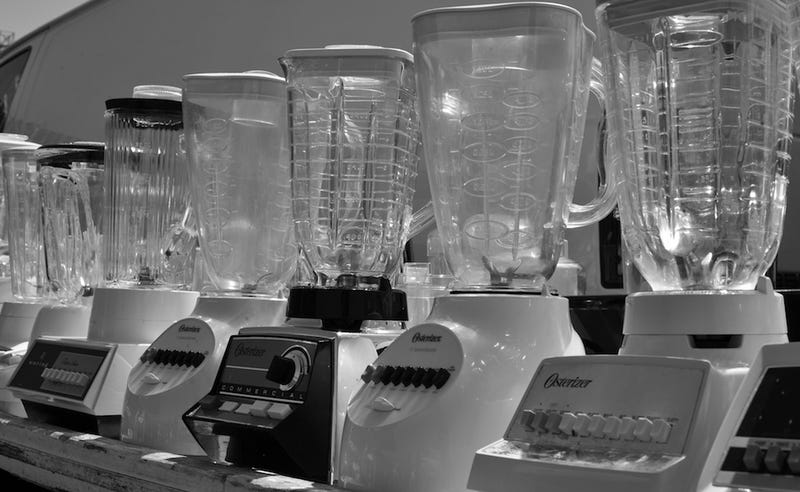
Most of us have a blender in our kitchens, but when you bought yours, what did you look for when you picked it up? The wattage of the motor maybe, or the size of the carafe? A good one will excel in both of those departments sure, with a strong motor and a large carafe that’s big enough for what you want to put into it, but there’s so much more to consider.
http://gear.kinja.com/five-best-blen…
While you don’t need to blow out your budget on a Blendtec or something extremely pricey, you should at least buy carefully, and spend a little on something that’ll do multiple jobs and last you a long time. Our friends at Kinja Co-Op have some suggestions here, along with some affordable options if their top tier gives you sticker shock. Go forth and smoothie, soup, and emulsify without fear.
http://gear.kinja.com/whats-your-fav…
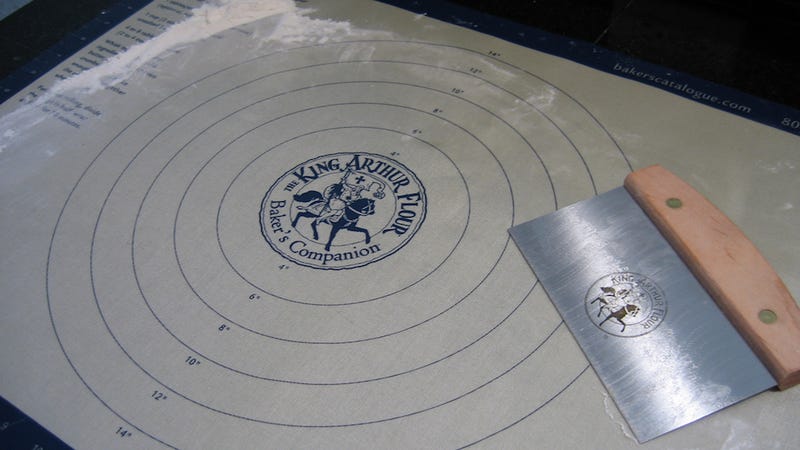
While a lot of the items we’ve mentioned so far can be expensive, the humble bench scraper doesn’t have to be—it’s just not nearly as common in home kitchens as it really, really should be.
http://skillet.lifehacker.com/kitchen-tool-s…
After all, at most a good one will set you back a mere ten bucks, with servicable options close to half that price, and once you have one, you’ll never beat up your knives trying to scrape the last bit of anything off of a cutting board again, you’ll never have trouble dividing dough or bread or ground meat for burgers again, you’ll never have trouble getting clean sides on a frosted cake again, and you’ll always have a tool to help you clean up countertops before, during, and after cooking. Seriously, get one of these, it’ll change your life.
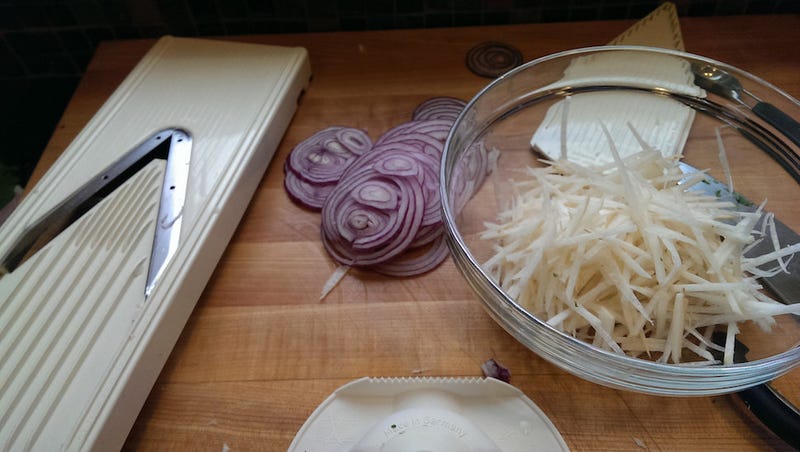
The mandoline is super useful, and can give you perfectly julienned vegetables in no time, easy vegetable noodles without having to buy and store a massive spiralizer, and more. In fact, in an interview with Mark Bittman, he told us that the mandoline was one of his favorite workhorse kitchen tools.
http://lifehacker.com/5661941/mark-b…
Of course, a mandoline can definitely be a dangerous tool if you don’t know how to use one, but the basics are pretty simple: Go slow, and use the handguard.
http://lifehacker.com/four-tips-for-…

Ah, cast iron. Cast iron cookware is essential in any home kitchen, and once you get used to them and get your favorite one well seasoned, it’s possible you’ll never use anything but cast iron for just about anything you want to cook. They don’t have to be expensive, either—maybe you need a couple of cast iron skillets and buy them new, pre-seasoned. Maybe you get some hand-me-downs from a family member or a thrift store bargain that needs to be re-seasoned, and can last the test of time. That’s the beauty of cast iron—buy it once, and as long as you care for it, it’ll last you forever.
http://skillet.lifehacker.com/kitchen-tool-s…
Most people also assume cast iron pans are only good for steaks and meat—and while they’re absolutely great for those things, they’re also useful for a wide array of other amazing dishes, from pizza to queso fundido. Even if you don’t want to make skillet pizza, you can use your cast iron as a pizza stone. Not enough? Grill fish in minutes, roast a whole chicken, even roast your own coffee beans. Need we continue?
http://skillet.lifehacker.com/five-delicious…
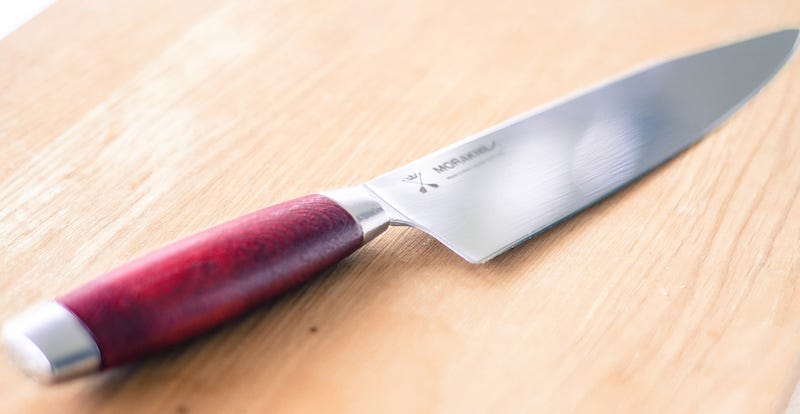
Most of you likely already know that a good chef’s knife can make a huge difference in your cooking. A solid blade that you’re comfortable using can make cooking easier, and a lot more fun. What you may not know is that investing in a good knife makes a huge difference too—and we’re not talking about spending hundreds (although you could certainly do that), just a few more than whatever came in that knife set you really shouldn’t have bought when you moved out on your own.
http://lifehacker.com/5897045/budget…
Even some affordable models are budget upgrades that will transform the way you cook, as long as you know what to look for. Think about how you cook, choose between carbon steel or stainless, learn to keep them sharp (because as you may have heard, dull knives are more dangerous in the kitchen) preferably with a water stone, and even an affordable chef’s knife will be an investment that lasts you years and years.
http://lifehacker.com/dont-buy-expen…
Illustration by . Additional photos by Warren Layton, pseph, The Homesteading Hippy, Claire Lower, Chris Hunkeler, Mike McCune, Kevin Purdy, Bruce, and Erik Forsberg.
Lifehacker’s Weekend Roundup gathers our best guides, explainers, and other posts on a certain subject so you can tackle big projects with ease. For more, check out our Weekend Roundup and Top 10 tags.
from Lifehacker